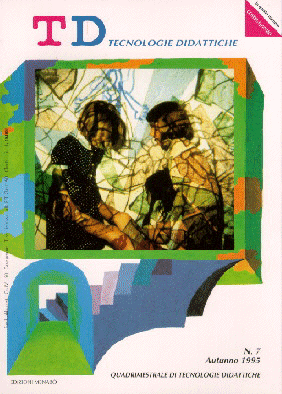Collaborative construction of products and communication technologies
Main Article Content
Abstract
Article Details
Section
Authors who publish with this journal agree to the following terms:
- Authors retain copyright and grant the journal right of first publication with the work simultaneously licensed under a Creative Commons CC BY 4.0 Attribution 4.0 International License.
- Authors are able to enter into separate, additional contractual arrangements for the non-exclusive distribution of the journal's published version of the work (e.g., post it to an institutional repository or publish it in a book), with an acknowledgement of its initial publication in this journal.
- Authors are permitted and encouraged to post their work online (e.g., in institutional repositories or on their website) prior to and during the submission process, as it can lead to productive exchanges, as well as earlier and greater citation of published work (See The Effect of Open Access)
References
Costruttivismo sociale
Cohen, E. (1994) Restructuring the classroom: conditions for Productive small groups. Review of Educational Research 64 (1), 1-35.
Perret-Clermont, A.N, Schubauer-Leoni, M.L. e Grosscn, M.(1991) Interactions sociales dans le dévelopment cognitif: nouvelles directions de recherche. ”Cahiers de psychologie, Université de Neuchâtel.
Pontecorvo, C. (1993) La condivisione della conoscenu. In: C. Pontecorvo (a cura di) La co~ndivisione della conoscenza pp 1-25, La Nuova Italia, Firenze.
Resnick, L.B., Levine, J.M., Beherend, S.D. (1991) Perspectives on socially shared cognition. American Psychological Association, Washington, D.C.
Salomon, G. (ed.) (1993) Distributed cognitions. Psychological and educational considerations. Cambridge University Press, Cambridge Mass.
Wertsch, J.W.e Rupert, L. J. (1993) L’interazione mediata dagli strumenti culturali. In: C Pontecorvo (a cura di) La condivistone della conoscenza, pp.29-45, La Nuova Italia, Firenze.
Progetti sperimentali sull’uso di tecnologie della comunicazione a scuola
Brown, A.L.e Carnpione, J.C. (1990) Communities of learning and thinking or A context by any other name. Human Development, 21, 108-125.
Caravita, S. e Palomba, F. (1994) Comunicare per cosa e con chi a scuola? “Espedienti” per passare dalla classe chiusa alla rete. In: G. Trentin (a cura di) Atti della Giornata di Studio su: “Telematica e cooperazione didattica, pp.29-49, Edizoni Menabò, Ortona.
Giordano, E. (in stampa) Didattica delle scienze e comunicazione telematica
Scardamalia, M. e Bereiter, C. (1994) Computer-support for knowledge building communities, The Jounral of the learning Sciences 3, pp. 265-283.
Trentin, G. (1994) Telematica e cooperazione didattica. In: G. Trentin (a cura di) Atti della Giornata di Studio su: “Telematica e cooperazione didattica, pp.29-49, Edizoni Menabò, Ortona.
Comunicazione e sviluppo del pensiero riflessivo.
Applebee,A.N. (1984) Writing and reasoning. Review of Educational research 54 (4), 577-595.
Bereiter, C. e Scardamalia, M. (1987) An attainable version of higher literacy: approaches to teaching a higer-order skills in reading and writing, Currrcullum lnquiry 17, 9-30.
Daiute, C e Dalton, B. (in starnpa) Collaboration between children leaming to wribe: can novices be masters? Cognition and Instruction.
Fcllows, N. (1994) A window into thinking: using student writing to understand conceptual change in science learning. Journal of Research in Science Teaching 31 (9) 985-1001.
Lipman, M. (1993) Promoting better classromm thinking. Edcational Psycology 13(3-4), 291-304.
Mason, L. (1995) Talking and writing to promote conceptual clunge in the classroonL Presentato alla 6th European Conference on Learning and Instruction (EARLI), Agosto 1995, Nijmegen, Olanda.
Valutazione e costruzione sociale di conoscenza
Bonk, C.J. (1995) Searching for social constructivism in learning environment surveys and social interaction coding coding schemes. Presentato alla 6th European Conference on Learning and Instruction (EARLI), Agosto 1995, Nijmegen, Olanda.
Brown, A.L., Campione. J.C, Webber, L.S. e Mc Gilly K. (1992) Interactive learning environments: a new look at assessment and instruction. In: B.R.Gifford e M.C. O’Connor (Eds.) Changing assessments. Alternative views of aptitude, achievement and instruction. pp.121-211, Kluwer, Boston.

